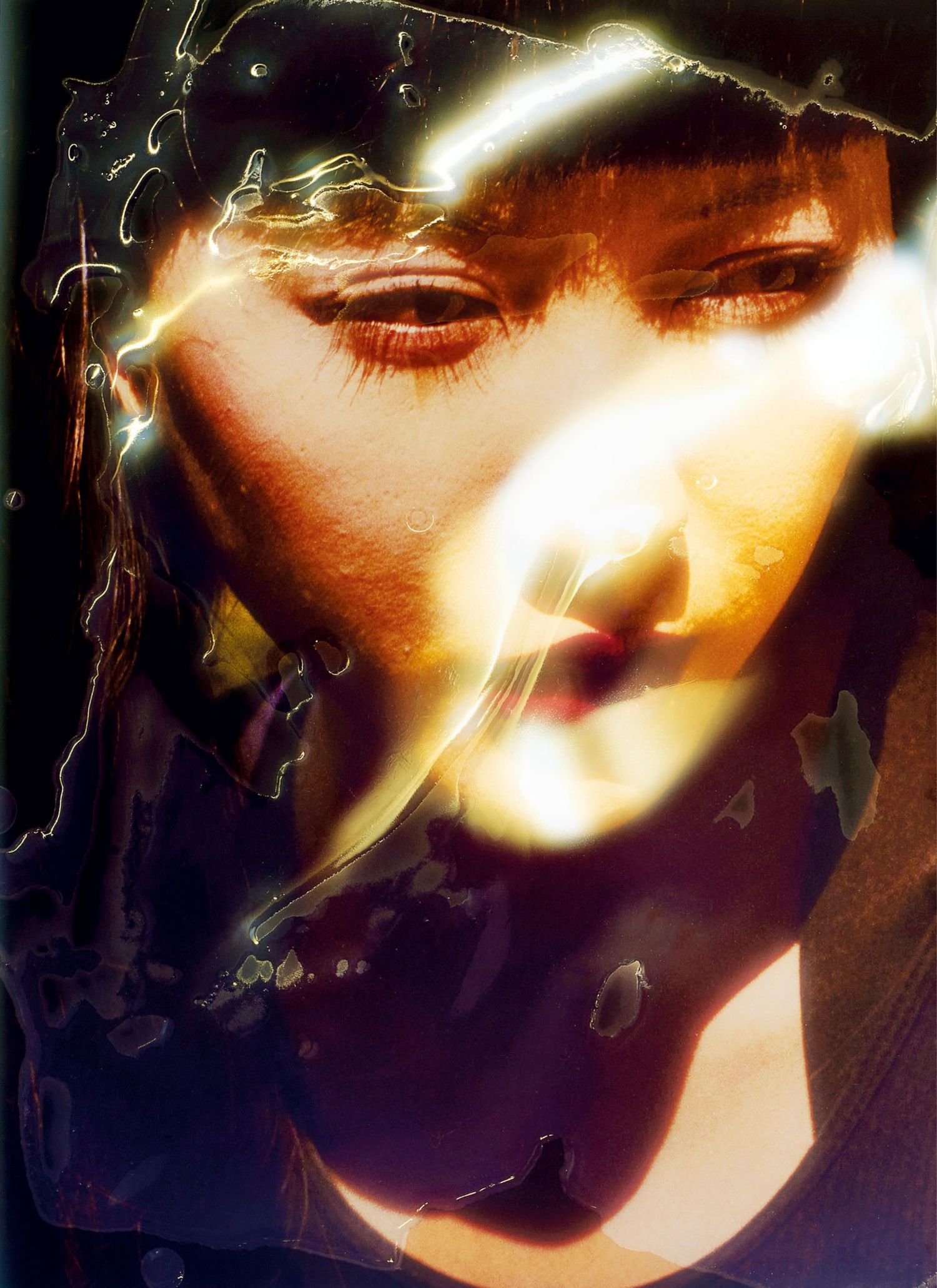The Japan of Jean-Vincent Simonet’s In Bloom is not easy to grasp. Slippery and elusive, it seems to be a place dreamt up rather than in reality’s existence, its streets and buildings volatile, melting into pools of neon light. It’s Tokyo and Osaka at night, cast in the weird color spectrum of a man-made city glow. Named in honor of the extravagant artificial flower bouquets brought to christen new clubs, and as an homage to an intoxicated rendition of Nirvana’s In Bloom in a Tokyo karaoke bar, Simonet’s series of mutating, drippy images attempt to capture the life found in the dead of night, before the day begins and the reverie is over.

In Bloom keeps with the energy that runs through much of the French photographer’s work: excess, chaos, romanticism. It’s less about place and more about the nocturnal impressions and feelings of the people that inhabit it—more specifically, the experience of Simonet himself. In his previous work, the feverish universe he created was an intimate one, occupied by close friends. Taking the transgressive prose poem The Songs of Maldoror by French writer Comte De Lautreamont as his starting point, his six-booklet series transfigured the hedonistic jaunts of its 19th century protagonists into the present day. It not only embodies a way of being in the world—wild, extreme and pleasure-seeking—but also a way of seeing, with each chapter taking on a different visual language.
This time the photographer was guided not by his immediate surroundings and circle, but rather by the feeling of being in a new and unfamiliar place and the process of breaking down its layers. In Bloom is a culmination of three trips to Japan. Shooting the whole time, Simonet describes taking tourist shots on his first visit, then feeling the burden of the rich tradition of Japanese street photography during the second. It was only on the last journey that Simonet felt something working, when he made friends with a group of people who were his portal into a more clandestine side of his new surroundings.

Opening himself to a more kaleidoscopic experience of Tokyo and Osaka with a new circle of friends, Simonet’s focus became nocturnal. “Japan is so layered. You have the street and it’s incredible, but you can also go three floors down through the basements, or 10 floors up,” he says. “You don’t know that if you get in the elevator and go up to the 10th floor, you will find a weird bar with non-stop music for 24 hours. There is nothing in the streets that says that.” Once immersed, finding a fitting visual container for the intoxicating pull of the night and its pleasures became the photographer’s next challenge. Reviewing his images, he began to eliminate the daytime city-views, drawn to the blurry accidents and snapshots of his evening activities.
Simonet has never been one to settle on a singular photographic style or technique. At school, he was quick to turn his back on the sober Swiss mode of photography that was promoted at the time, vowing instead to exploit all of the medium’s possibilities. Analog, digital, black and white, color, iPhone, large-format, glitching, superimposition, manipulations—his restless experiments somehow mirror the torrents of information we are exposed to daily. But it wasn’t long before he became tired of expounding all digital had to offer. “I was a bit fed up with that, because I did a lot: always searching behind the screen, behind your computer. It was a bit too much for me,” the photographer says.

In between the Japan trips, Simonet brought his experimentation back to the physical realm in his father’s offset printing factory. It was here that he developed a printing process that would bring In Bloom into full fruition. Normally used for mass commercial printing, the photographer began to use the large, heavy-duty machines to play. “There is no tutorial, nothing you can check. I was just picking up paper and putting it roughly in the printer to see what happens. Sweating a bit, sometimes,” he explains. “The only way to make the process evolve was to make some mistakes. It was only after mistake upon mistake that I started building some rules for my practice.”
The result was a totally handmade method of printing his images onto plastic paper and sculptural resin, which drips naturally, followed by submerging them into water before they are fully dry, erasing layers of ink in the process. Bringing his analog images to life, particularly the darkest ones that would bleed the most, Simonet found a shape for the project. “I had this strong feeling of the city as something organic. You are part of living stuff, with all the highways and the subways. It’s really complex and chaotic. So that’s how I started to link my experimentation to Tokyo—to the feeling of the city,” says the photographer. Within each image is the potential for change and metamorphosis, just like the unpredictable nature of the city and a night spent under its spell.

Drawn together in a book published by Self Publish, Be Happy, a carefully-chosen sequence of these ‘live’ photographs is harnessed to the printed page, forming a flurry of sensations, places and faces that make up Simonet’s never-ending trip. The process Simonet used for In Bloom remains living and in flux too, as he continues to explore its potentials, engaging in live performances and experimenting with different chemicals.
If you like this work, you may like Burnout, by Daisuke Yokata, and Something Here, by Shin Noguchi. Enjoy!











